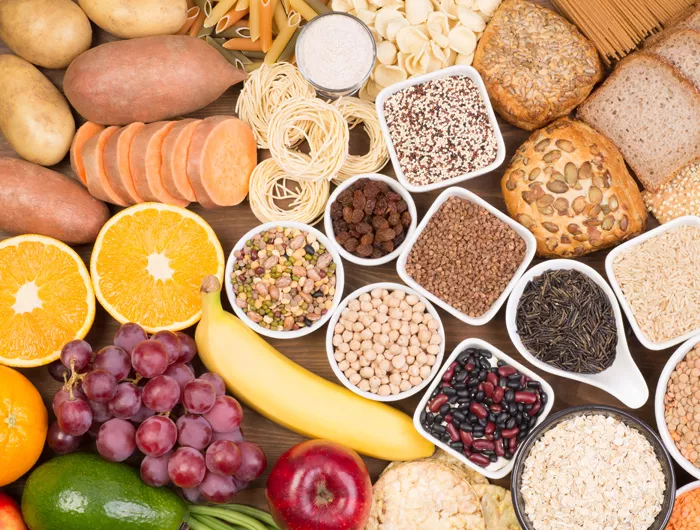Are low-glycemic carbs healthier?

“Lower glycemic index than cane sugar,” boasts the package of Nutiva Coconut Sugar. That may sound good…but it doesn’t mean much.
In theory, glycemic index (GI) measures how much a carbohydrate-containing food raises blood sugar.
Some examples of GI values:
- High GI: glucose (100), potatoes (80), whole-grain or white bread (75), white or brown rice (70), table sugar (65), soda (60).
- Low GI: white or whole-grain pasta (50), bananas (50), oranges (45), apples (35), lentils (30), chickpeas (30), kidney beans (25), fructose (15).
But it’s not clear that a food’s glycemic index matters.
The issues with GI values
“The glycemic index is just not a useful way to categorize carbohydrates,” says Frank Sacks, professor of cardiovascular disease prevention at the Harvard T.H. Chan School of Public Health.
In his OmniCarb study, roughly 160 overweight people were fed, for five weeks each, healthy diets that were high or low in glycemic index and high or low in carbs.
“Our measure of insulin sensitivity got worse on the low-glycemic, high-carb diet,” says Sacks. (That is, the participants’ insulin worked less efficiently.) And insulin sensitivity was no better on the low-glycemic, low-carb diet.
What else matters
So why do some studies that track thousands of people for years find a lower risk of heart disease or diabetes in those who eat lower-glycemic diets?
“I suspect that it’s because a low glycemic index is associated with a bunch of other favorable dietary indicators,” says Sacks. For example, “many low-glycemic-index foods are high in fiber. And they include most legumes, fruits, and vegetables.”
In contrast, a high-glycemic diet may be loaded with white bread and soda.
What’s more, a food’s glycemic index is hard to nail down. “If you chew your food a lot, the glycemic index goes up,” says Sacks.
And how much your blood sugar climbs after a meal depends on what else you eat.
“Fattier foods—like meat, cheese, oil, or mayo—could lower the glycemic index of a meal, possibly because a meal with more fat takes longer to leave the stomach,” says Sacks. “So its carbohydrates take longer to be absorbed into the bloodstream.”
And blood sugar levels may vary from person to person, depending on their gut microbes.
A healthy diet
“We know how to put together healthy diets,” says Sacks. “We know that more fruits, vegetables, and beans are protective for cardiovascular disease, diabetes, and some cancers.
“Would the glycemic index help us do that better? I don’t think so. It’s imperfect, and it’s a distraction.”
The bottom line
Build your diet around healthy foods, regardless of their glycemic index.
Photo: photka/stock.adobe.com.
Tags
Topics

